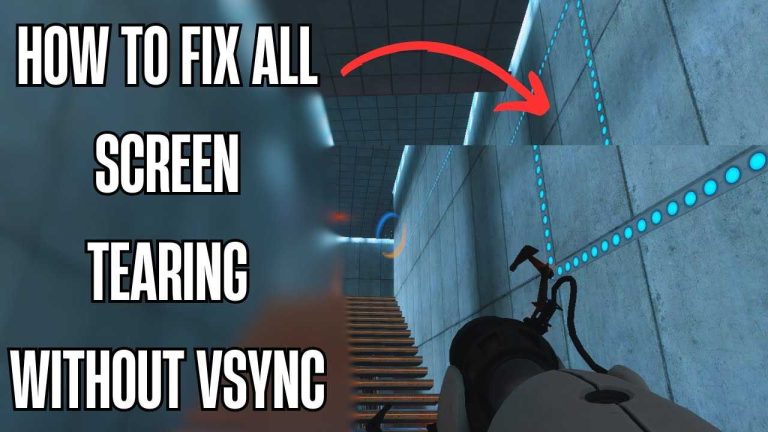Quick answer: Check the monitor’s specifications label or user manual for HDMI details, or look for an HDMI port on the device. If you see an HDMI port or the specifications mention HDMI support, your monitor likely supports it.
Knowing if your budget monitor supports HDMI doesn’t have to be complicated. Many affordable monitors today come with HDMI, but some older or cheaper models may lack it altogether. The easiest way is to look for the HDMI port on the back of the monitor—it’s usually a small, rectangular port labeled HDMI. If you’re unsure, consult the user manual or the product specifications online. Sometimes, the packaging or product description will specify HDMI support. Ensuring your monitor supports HDMI is important for easy connection to modern devices like laptops, gaming consoles, and streaming devices, providing a clearer and more convenient display experience without the need for additional adapters.
How to Know if Budget Monitor Supports HDMI
Knowing whether your budget monitor has HDMI support is essential for setting up your devices properly. HDMI offers a simple way to connect computers, gaming consoles, and other electronics to your monitor with high-quality video and audio. This section will guide you through the key steps to identify HDMI compatibility on your budget monitor.
Check the Monitor’s Physical Ports
The easiest way to determine if your monitor supports HDMI is to physically inspect it. Look at the back or sides of your monitor for different ports. HDMI ports are usually rectangular with a slightly tapered shape at the top and labeled as “HDMI” or “HDMI In.”
- Some budget monitors may only have VGA or DVI ports, so verifying the presence of HDMI is vital.
- Ensure you identify all ports to avoid confusion with other similar-looking inputs.
Consult the User Manual or Product Specifications
If physically inspecting the monitor isn’t enough, review the user manual or product specifications. These documents often mention the supported input types, including HDMI.
- Look for sections labeled “Input Ports” or “Connectivity Options.”
- Manufacturers typically list supported inputs clearly, making it easy to see if HDMI is included.
Visit the Manufacturer’s Website for Detailed Specs
The official website of the monitor brand offers comprehensive technical details, including supported input types. Search for your specific model number to find specifications.
- Many brands include detailed features in the product description or technical sheets.
- Some sites offer downloadable PDFs with in-depth information.
Identify the HDMI Version Supported
Not all HDMI ports are created equal. Check whether your monitor supports HDMI 1.4, 2.0, or newer versions. Different versions provide various features, such as higher resolutions or faster refresh rates.
- Older monitors may only support HDMI 1.3 or 1.4, often limiting resolution or refresh rate.
- Newer versions support 4K resolution or higher and faster data transfer.
Understanding Common HDMI Ports on Budget Monitors
In budget monitors, HDMI ports are generally standard, but some may have only one HDMI inlet. Familiarize yourself with typical port arrangements.
| Port Type | Features | Note |
|---|---|---|
| HDMI | High-quality video and audio transfer | Common on newer or slightly higher-priced models |
| VGA | Analog video connection | Less common in modern monitors, but sometimes available on budget models |
| DVI | Digital video connection | Can carry digital signals; may require adapters for HDMI |
How to Verify HDMI Support via Device Compatibility
If you already own a monitor and want to check if it supports HDMI, connect an HDMI cable from your device to the monitor. Turn on both devices to see if the display signals correctly.
- If the display appears with good resolution and audio, the HDMI port functions properly.
- If not, check for possible issues like loose connections or incorrect input selection.
Ensure Compatibility with Your Devices
Having an HDMI port on the monitor isn’t enough if your device lacks HDMI output. Check your computer, gaming console, or other electronics for HDMI ports.
- For older devices, you might need an adapter or converter to connect via HDMI.
- Always verify the compatibility of cable types and ensure they match for seamless connection.
Common Challenges and Troubleshooting
Sometimes, even if your monitor has an HDMI port, it might not display correctly. Confirm that your monitor’s input settings are set to HDMI.
- Check the monitor’s menu for input options and select HDMI manually if necessary.
- Update your device’s graphics drivers to support HDMI output fully.
Additional Features to Look for in Budget Monitors
While checking for HDMI support, consider other features that enhance your viewing experience. Budget monitors increasingly include features like built-in speakers, multiple HDMI ports, and adjustable stand options.
- Multiple HDMI ports are useful if you plan to connect several devices.
- Built-in speakers can save space and reduce the need for additional audio hardware.
Related Topics
- Other types of monitor inputs such as DisplayPort, VGA, or DVI
- How to convert VGA or DVI to HDMI
- The difference between HDMI versions and what they support
- Guide to choosing the best budget monitor for your needs
Understanding whether your budget monitor supports HDMI is straightforward once you know what to look for. By inspecting ports, reviewing specifications, and testing with your devices, you can easily confirm HDMI support and ensure your setup meets your needs.
Do PS5 Players Actually Need HDMI 2.1?
Frequently Asked Questions
What physical features should I check to confirm if my monitor has an HDMI port?
Examine the back or side panel of your monitor for a rectangular port labeled “HDMI.” These ports are usually easily identifiable by their wider shape compared to other video inputs like DisplayPort or VGA. If you see a port with the label “HDMI,” your monitor supports this connection type.
How can I verify the input options listed in the monitor’s manual?
Refer to the user manual or technical specifications sheet provided with your monitor. These documents specify all supported input types, and if HDMI is mentioned, your device is compatible with HDMI connections. If you no longer have the manual, search for your monitor’s model number online for detailed specifications.
Can I determine HDMI support by inspecting the display settings or on-screen menu?
Generally, the display menu does not show input port types. However, some monitors indicate the active input source on-screen. Check if HDMI appears as an available or selected input option when you navigate through the menu. If your monitor detects an HDMI signal when connected, it supports HDMI.
What role does the monitor’s model number play in identifying HDMI support?
Knowing your monitor’s exact model number allows you to look up detailed specifications online. Manufacturers typically list all supported input ports, including HDMI, for each model. This method provides a clear answer without physically inspecting the device.
How important is compatibility between the HDMI version on my monitor and my device?
While most monitors with HDMI ports support standard HDMI connections, newer models may support higher versions, offering better features like increased bandwidth or 4K resolution. Confirm the HDMI version supported by your monitor and ensure it matches or exceeds the version on your device for optimal performance.
Final Thoughts
To know if a budget monitor supports HDMI, first check the product specifications online or on the packaging. Look for an HDMI port or mention of HDMI compatibility.
You can also inspect the monitor physically; HDMI ports are rectangular with a slightly tapered shape. If you’re unsure, consult the manufacturer’s website or user manual.
In summary, understanding how to know if a budget monitor supports HDMI involves examining specifications and ports. These steps help verify HDMI support quickly and easily.

I follow the latest trends in smart devices, portable monitors, and gaming accessories. My goal is to provide real-world insights that help readers make smarter tech decisions.




